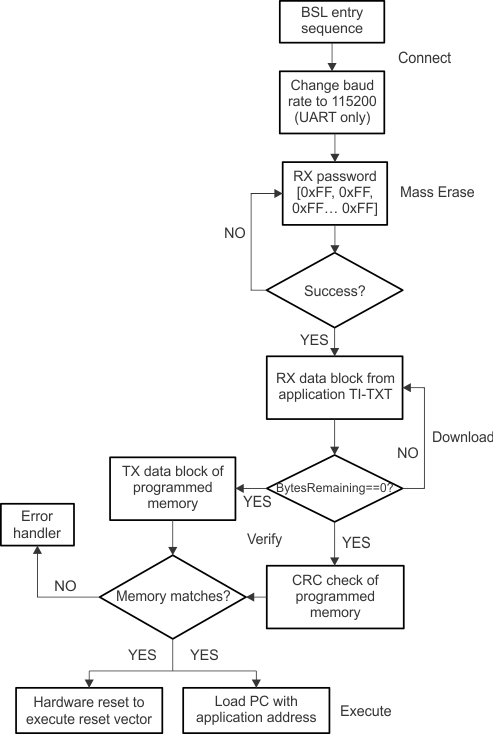SLAU550AB January 2014 – September 2022 MSP430FR2032 , MSP430FR2033 , MSP430FR2110 , MSP430FR2111 , MSP430FR2153 , MSP430FR2155 , MSP430FR2310 , MSP430FR2311 , MSP430FR2353 , MSP430FR2355 , MSP430FR2433 , MSP430FR2532 , MSP430FR2533 , MSP430FR2632 , MSP430FR2633 , MSP430FR4131 , MSP430FR4132 , MSP430FR4133 , MSP430FR5041 , MSP430FR5043 , MSP430FR50431 , MSP430FR5847 , MSP430FR58471 , MSP430FR5848 , MSP430FR5849 , MSP430FR5857 , MSP430FR5858 , MSP430FR5859 , MSP430FR5867 , MSP430FR58671 , MSP430FR5868 , MSP430FR5869 , MSP430FR5887 , MSP430FR5888 , MSP430FR5889 , MSP430FR58891 , MSP430FR5947 , MSP430FR59471 , MSP430FR5948 , MSP430FR5949 , MSP430FR5957 , MSP430FR5958 , MSP430FR5959 , MSP430FR5967 , MSP430FR5968 , MSP430FR5969 , MSP430FR5969-SP , MSP430FR59691 , MSP430FR5986 , MSP430FR5987 , MSP430FR5988 , MSP430FR5989 , MSP430FR5989-EP , MSP430FR59891 , MSP430FR6041 , MSP430FR6043 , MSP430FR60431 , MSP430FR6877 , MSP430FR6879 , MSP430FR68791 , MSP430FR6887 , MSP430FR6888 , MSP430FR6889 , MSP430FR68891 , MSP430FR6927 , MSP430FR69271 , MSP430FR6928 , MSP430FR6972 , MSP430FR6977 , MSP430FR6979 , MSP430FR69791 , MSP430FR6987 , MSP430FR6988 , MSP430FR6989 , MSP430FR69891
- Abstract
- Trademarks
- 1Introduction
- 2Overview of BSL Features
- 3BSL Architecture
- 4BSL Protocol
- 5Common BSL Use Cases
- 6Customize the BSL
- 7Bootloader Versions
- 8Revision History
5.1 Overview and Flow Chart
A common BSL use case is to erase a device and load new firmware onto it. The erase can be done either by a RX Password command that is sent with the wrong password or by the Mass Erase command.
After the application has been erased, the password is always 0xFF for all bytes. A second RX Password command is sent with the correct password to gain access to the device. After the BSL is unlocked, the application can be loaded using the TX Data Block command. If additional verification is desired, the host programmer can request a CRC on the application or read the programmed application code. After the application has been verified, the device can be reset or the host programmer can provide an address for the BSL to set the program counter and begin execution.
 Figure 5-1 Flowchart
Figure 5-1 Flowchart